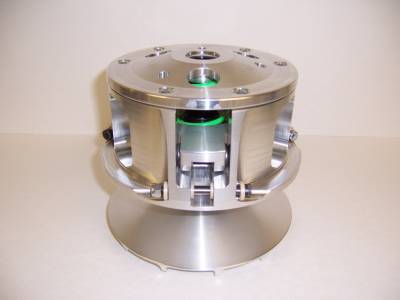STM primary clutch for Maverick
This is the clutch you wish you Maverick came with. This clutch will increase rear wheel hp almost by 10. This is due to reduced belt slipping.
Features:
-All billet construction.
-Increased hp put to the ground.
-Longer belt life.
Includes:
-Primary clutch assembly.
-Adjustable weight kit.
Optional:
-Primary spring (you need one info below)
-Stk engagement rpm #1
-Raise 500 rpm over stk #2 (most common and recommended)
-Raise 1000 rpm over stk #3
-Raise 1500 rpm over stk #4
Why do you want this primary clutch?
This clutch is the best bang for you buck mod for the Maverick. The OEM Maverick clutch is plagued with issues that cause belt slip. STM is the best clutch money can buy. Others companies sell clutches that are extremely old technology based of of the Honda Odyssey or Pilot similar to a Yamaha rhino 660. These clutches simply do not have the adjustment and cant match the amount of belt pinch that is needed on these high powered cars. This team primary is much better and very adjustable. The adjustable weights have 3 positions to completely dial in your powerband and how it hits.
**Read below for more info**
Features:
-All billet construction.
-Increased hp put to the ground.
-Longer belt life.
Includes:
-Primary clutch assembly.
-Adjustable weight kit.
Optional:
-Primary spring (you need one info below)
-Stk engagement rpm #1
-Raise 500 rpm over stk #2 (most common and recommended)
-Raise 1000 rpm over stk #3
-Raise 1500 rpm over stk #4
Why do you want this primary clutch?
This clutch is the best bang for you buck mod for the Maverick. The OEM Maverick clutch is plagued with issues that cause belt slip. STM is the best clutch money can buy. Others companies sell clutches that are extremely old technology based of of the Honda Odyssey or Pilot similar to a Yamaha rhino 660. These clutches simply do not have the adjustment and cant match the amount of belt pinch that is needed on these high powered cars. This team primary is much better and very adjustable. The adjustable weights have 3 positions to completely dial in your powerband and how it hits.
**Read below for more info**
Please Call for Availability
619-562-0188
Availability: Starting at- $965
Description
What is the job of a CVT clutch and how is it optimized:
Simply put your CVT clutches job is to get you to your operating rpm as quickly as possible and keep it there as long as possible when you step on the gas. Your operating rpm should be the rpm your engine makes its peak horsepower at. This is how you ensure your vehicle is using all available horsepower. For example if you engine makes 70hp at 7000 rpm and 90hp at 8000 rpm if you operating rpm is set around 7000 rpm you are not using all your horsepower. Being off just 300 rpm can easily cost you 5 hp. This is the most important setting of a CVT clutch as well as the most common problem with a CVT clutch. Many people don't take the time to set this and wonder why there buddies car is faster than theirs.
How do you control the operating rpm?:
The operating rpm is controlled by the clutch weight. Different clutches use different style weights. The 2 main types of weights are rollers and arms. Rollers are what you find on older style CVT clutches like a Rhino 660 or old Honda Odyssey/Pilot as well as many aftermarket ones we do not recommend for the Maverick. These are round and roll forward and back in the sheave. The other type is the arm type. These are greatly superior. The reason for this is simply adjustment. The arms have 3 positions to adjust the weight. These arms work by flinging outward. The weight positions in the arm control how the weight flings. With this you can control how the power hits as well as operating rpm can be dialed much more precisely from low speeds to top speed to ensure you always have the most horsepower available when needed. With the roller type weights you will often see big dips in power somewhere. You can dial in 1 area well but areas others will suffer because the adjustment is not there.
Why your OEM Maverick clutch is costing you horsepower:
The maverick primary clutch has the ability to spin each half independently. This creates belt slip by design. This Team clutch is fixed so both halves of the clutch spin together and pinch the belt much better. So why would Can Am make a clutch that does this? To help protect the drive train. It acts like a wet clutch in a rhino creating slip at high loads. Add more power and your clutch will just slip more.
WARNING: California Residents, this item is subject to Proposition 65 regulations for cancer and reproductive harm.
Details
- 21013759
- Starting at- $965
- New
Categories
Shipping Information
- Item Requires Shipping
- 20.0 lbs.
- W15.0000” x H20.0000” x L20.0000”
- Free standard shipping We will select the shipping method.
Customer Reviews
 Total Reviews (0)
Total Reviews (0)
You must login to post a review.
- Team Alba Racing Difference
- We're the ExpertsAsk us anything. We are the professionals!
- Largest SelectionIf you don't find the part, we'll get it for you!
- Shipping See our shipping terms
- No Hassle ReturnsSee our return policy
- Have a question? Ask the Pros
- Email UsGet answers from the pros
- 619-562-0188Mon - Fri 7:00 - 4:00 PM PST


Write the First Review!